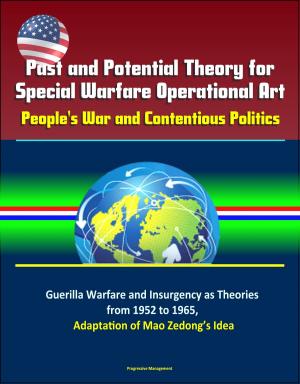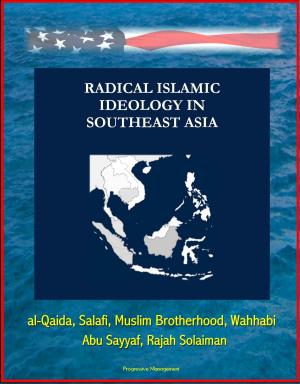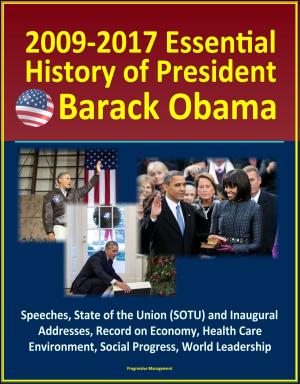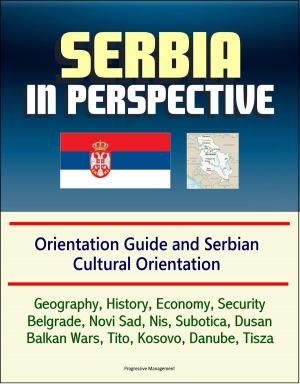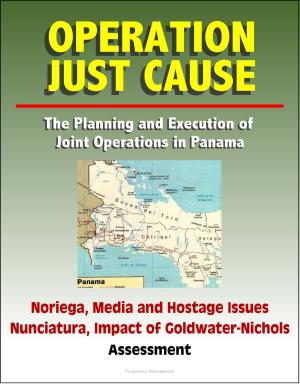Organized Crime Growth and Sustainment: A Review of the Influence of Popular Religion and Beliefs in Mexico - Drug Gangs, El Chapo, Narco-Cultura, Narco-Corridos, Sinaloa Cartel, Malverde Cult, Saints
Nonfiction, History, Americas, Mexico, Social & Cultural Studies, True Crime| Author: | Progressive Management | ISBN: | 9781370098361 |
| Publisher: | Progressive Management | Publication: | October 5, 2016 |
| Imprint: | Smashwords Edition | Language: | English |
| Author: | Progressive Management |
| ISBN: | 9781370098361 |
| Publisher: | Progressive Management |
| Publication: | October 5, 2016 |
| Imprint: | Smashwords Edition |
| Language: | English |
This important report has been professionally converted for accurate flowing-text e-book format reproduction. In 2006, Mexican President Felipe Calderon announced the "war on drugs," an ongoing, low-intensity, asymmetrical war between the government and various drug cartels that has proven the bloodiest conflict since the Mexican civil war a century ago. Meanwhile, the subculture of narco-cultura continues to grow, under the influence of powerful drug cartels throughout Mexico. The narco-cultura has its own dynamic form of dress, music, literature, film, religious beliefs and practices, and slang, which have become standard in some parts of the country, especially among the lower class and uneducated.
This thesis investigates the relationship between the narco-cultura and organized crime in Mexico, as viewed from multiple perspectives. It considers this subculture's historical origins and its influence on popular religion and narco-corridos (ballads). More precisely, this thesis explores how the narco-cultura appropriates religion and religious symbolism to maintain the growth of organized criminal groups.
CHAPTER I - INTRODUCTION * A. MAJOR RESEARCH QUESTION * B. SIGNIFICANCE OF THE RESEARCH QUESTION * C. LITERATURE REVIEW * D. POTENTIAL EXPLANATIONS AND HYPOTHESES * E. RESEARCH DESIGN * F. THESIS OVERVIEW * CHAPTER II - UNDERSTANDING LA FAMILIA MICHOACANA AND LOS CABALLEROS TEMPLARIOS, AND THEIR RELIGIOUS CULTS * A. THE EVOLUTION OF LA FAMILIA MICHOACANA AND LOS CABALLEROS TEMPLARIOS * 1. Historical Background * 2. La Familia Michoacana: Background, Leadership, and Enforced Silence * 3. The Provision of Services and the "Us versus Them" Divide * 4. Economic, Social and Cultural Context: Understanding Complexities * B. LA FAMILIA MICHOACANA AND LOS CABALLEROS TEMPLARIOS AS RELIGIOUS CULTS * 1. La Familia's Quasi-Religious Cult and its Religious Justification * 2. Los Caballeros Templarios' Code of Conduct * 3. Los Caballeros Templarios: Narco-Apostol (Apostle) * C. CONCLUSION * CHAPTER III - THE SINALOA CARTEL'S USE OF NARCO-CORRIDOS AND EMBRACE OF JESUS MALVERDE * A. HISTORICAL BACKGROUND * 1. Post-Revolution Corridos and Drug-trafficking Origins * 2. The 1930s: Corridos and Drug Contraband * 3. The 1940s: Drug-trafficking Evolution and the Popularity of Musica Nortena * 4. The 1950s-60s: Corrido Deterioration and Drug-smuggling Fight * 5. Narco-Corridos and the Birth of the Narco-Cultura * 6. The Strengthening of the Narco-Cultura * 7. Last Decade and a Dash: Narco-Corridos and the Narco-Cultura * B. SINALOA CARTEL: NARCO-CORRIDOS AND JESUS MALVERDE * 1. Narco-Corridos as a Recruiting Tool * 2. Sinaloa: The Tale of Jesus Malverde * a. A Fantasy, but Real * b. The Malverde Cult * c. Songs to the Narco-Santon (Narco-Saint) * C. CONCLUSION * CHAPTER IV - MEXICO'S "UNOFFICIAL SAINTS" * A. NARCO-SAINTS: BACKGROUND * 1. The Creation of Images * 2. The Making of Saints * 3. Religious Syncretism: A Fusion of Beliefs * B. RELIGIOUS SYNCRETISM IN THE NARCO-CULTURA * 1. La Santa Muerte: Mexico's Idol, Symbol, and Social Force and Aspects * 2. Juan Soldado * a. Historical Context * b. The Legendary Protector of Migrants * C. CONCLUSION * LIST OF REFERENCES * FOOTNOTES
This important report has been professionally converted for accurate flowing-text e-book format reproduction. In 2006, Mexican President Felipe Calderon announced the "war on drugs," an ongoing, low-intensity, asymmetrical war between the government and various drug cartels that has proven the bloodiest conflict since the Mexican civil war a century ago. Meanwhile, the subculture of narco-cultura continues to grow, under the influence of powerful drug cartels throughout Mexico. The narco-cultura has its own dynamic form of dress, music, literature, film, religious beliefs and practices, and slang, which have become standard in some parts of the country, especially among the lower class and uneducated.
This thesis investigates the relationship between the narco-cultura and organized crime in Mexico, as viewed from multiple perspectives. It considers this subculture's historical origins and its influence on popular religion and narco-corridos (ballads). More precisely, this thesis explores how the narco-cultura appropriates religion and religious symbolism to maintain the growth of organized criminal groups.
CHAPTER I - INTRODUCTION * A. MAJOR RESEARCH QUESTION * B. SIGNIFICANCE OF THE RESEARCH QUESTION * C. LITERATURE REVIEW * D. POTENTIAL EXPLANATIONS AND HYPOTHESES * E. RESEARCH DESIGN * F. THESIS OVERVIEW * CHAPTER II - UNDERSTANDING LA FAMILIA MICHOACANA AND LOS CABALLEROS TEMPLARIOS, AND THEIR RELIGIOUS CULTS * A. THE EVOLUTION OF LA FAMILIA MICHOACANA AND LOS CABALLEROS TEMPLARIOS * 1. Historical Background * 2. La Familia Michoacana: Background, Leadership, and Enforced Silence * 3. The Provision of Services and the "Us versus Them" Divide * 4. Economic, Social and Cultural Context: Understanding Complexities * B. LA FAMILIA MICHOACANA AND LOS CABALLEROS TEMPLARIOS AS RELIGIOUS CULTS * 1. La Familia's Quasi-Religious Cult and its Religious Justification * 2. Los Caballeros Templarios' Code of Conduct * 3. Los Caballeros Templarios: Narco-Apostol (Apostle) * C. CONCLUSION * CHAPTER III - THE SINALOA CARTEL'S USE OF NARCO-CORRIDOS AND EMBRACE OF JESUS MALVERDE * A. HISTORICAL BACKGROUND * 1. Post-Revolution Corridos and Drug-trafficking Origins * 2. The 1930s: Corridos and Drug Contraband * 3. The 1940s: Drug-trafficking Evolution and the Popularity of Musica Nortena * 4. The 1950s-60s: Corrido Deterioration and Drug-smuggling Fight * 5. Narco-Corridos and the Birth of the Narco-Cultura * 6. The Strengthening of the Narco-Cultura * 7. Last Decade and a Dash: Narco-Corridos and the Narco-Cultura * B. SINALOA CARTEL: NARCO-CORRIDOS AND JESUS MALVERDE * 1. Narco-Corridos as a Recruiting Tool * 2. Sinaloa: The Tale of Jesus Malverde * a. A Fantasy, but Real * b. The Malverde Cult * c. Songs to the Narco-Santon (Narco-Saint) * C. CONCLUSION * CHAPTER IV - MEXICO'S "UNOFFICIAL SAINTS" * A. NARCO-SAINTS: BACKGROUND * 1. The Creation of Images * 2. The Making of Saints * 3. Religious Syncretism: A Fusion of Beliefs * B. RELIGIOUS SYNCRETISM IN THE NARCO-CULTURA * 1. La Santa Muerte: Mexico's Idol, Symbol, and Social Force and Aspects * 2. Juan Soldado * a. Historical Context * b. The Legendary Protector of Migrants * C. CONCLUSION * LIST OF REFERENCES * FOOTNOTES




